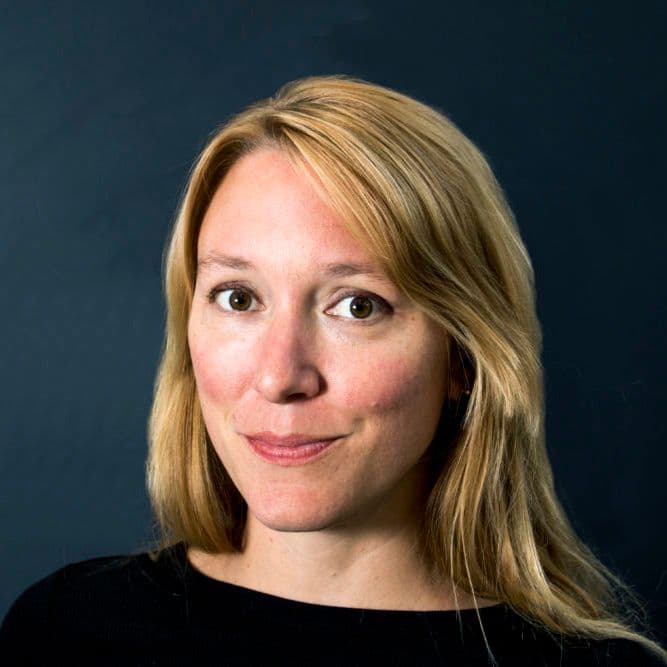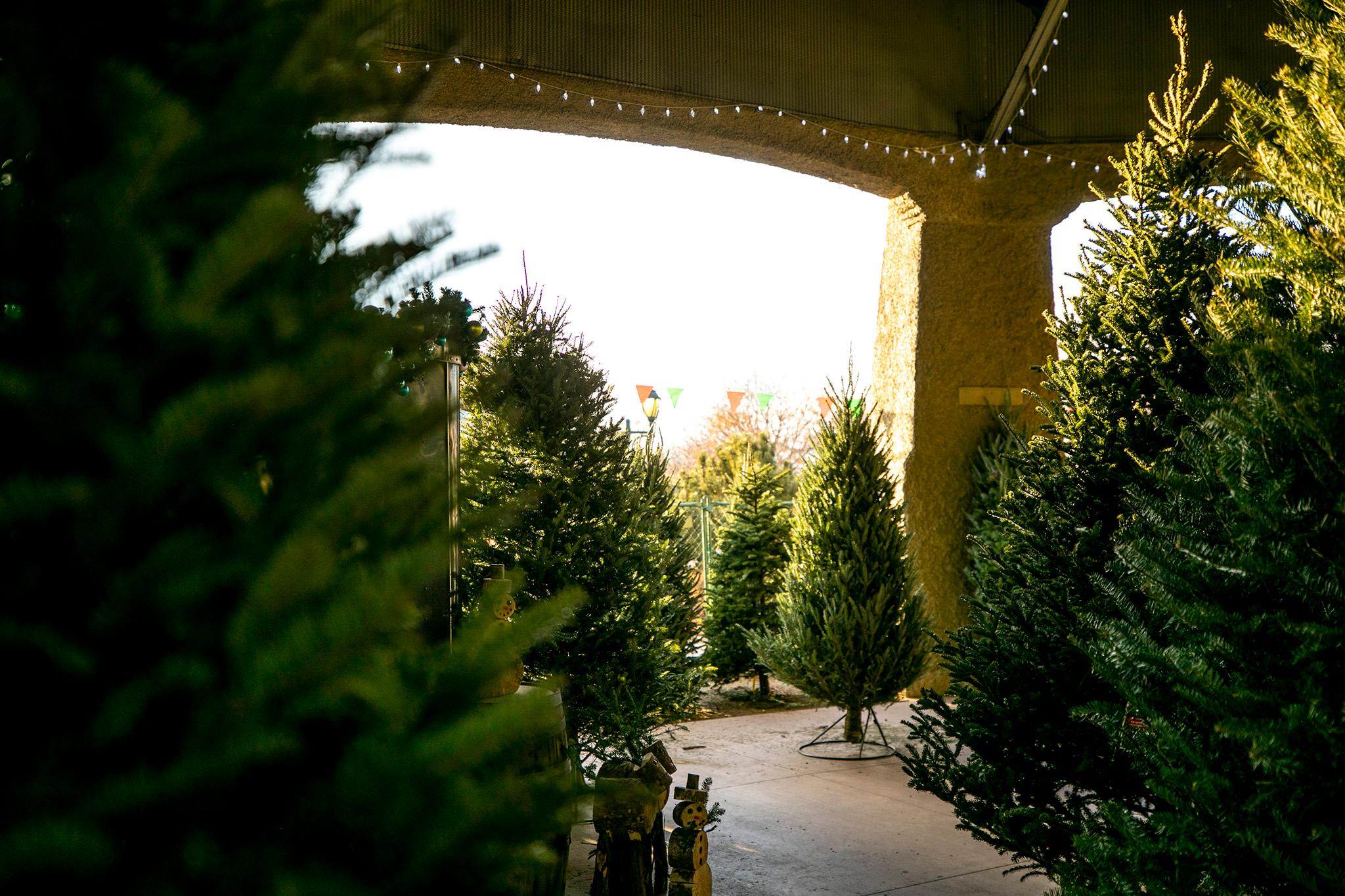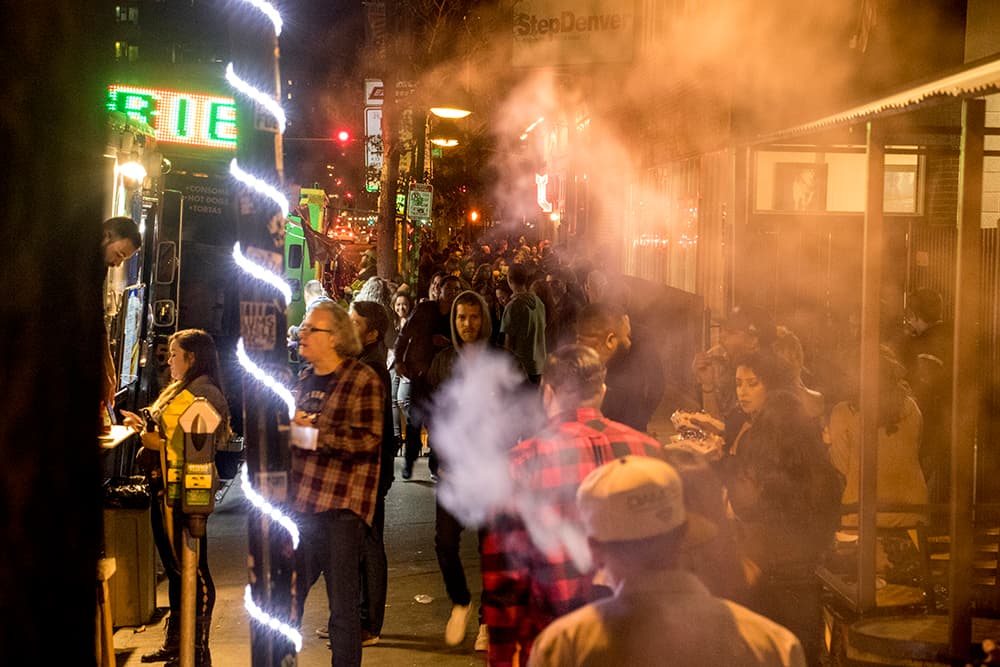
It’s 2 a.m. in LoDo.
For about 20 minutes, the sidewalks have become steadily more crowded with partiers — some happy, some angry, some stable, some stumbling. They’re lining up outside food trucks as drunk hunger, that special brand of hunger, rumbles in their stomachs. They’re walking in circles and craning their necks impatiently, trying to find the ride they’ve summoned among the mass of thoroughly gridlocked traffic.
In a 24-hour city, this scene doesn’t happen.
Think of New York. It’s got a 24-hour public transportation system, a healthy amount of 24-hour diners, a wealth of quality late-night dine-in and delivery options and 4 a.m. bar close time (with more than a few bars that’ll lock the doors and let you stay ‘til 5). It’s also much older and larger than Denver, and perhaps most importantly, its culture is different from Denver’s.
It’s a culture that doesn’t just want things at all hours, it expects it. It expects accessibility and convenience in a city, and a smorgasbord of all-hours food, drink and fun. And in exchange, it’s willing to accept more noise, more grit, more debauchery and more of a crowd.
So how close is Denver to becoming a 24-hour city — and is that something we want?
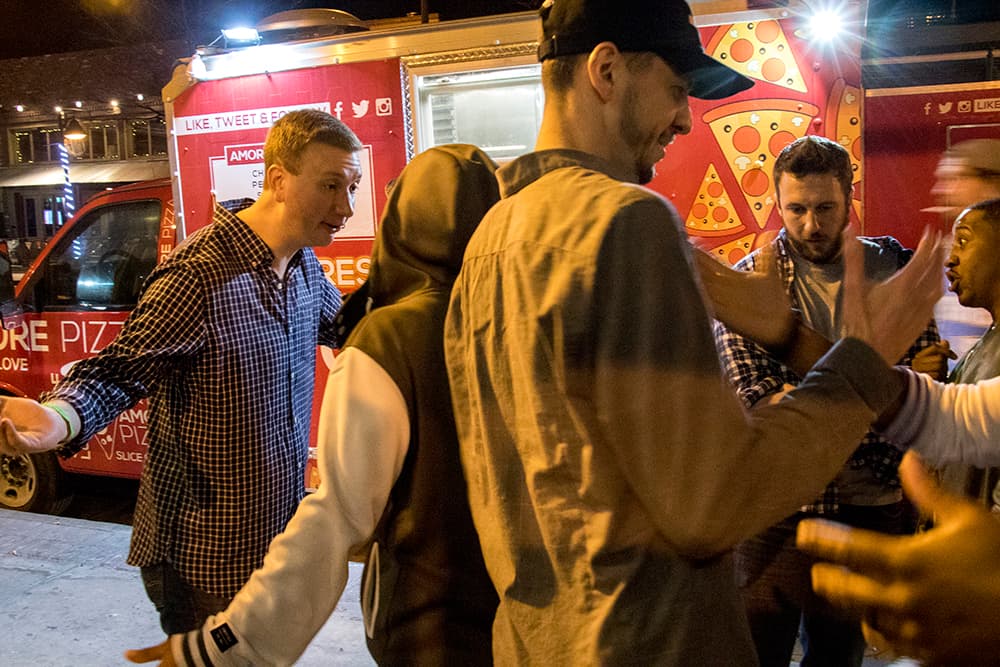
As Denver grows, the idea pops up more and more. We started wondering about it when Denise Gammon, a community developer at the Holland Partner Group told the Colorado Real Estate Journal that the Whole Foods inside her company’s Union Denver development “shows Denver is evolving into a true 24-hour city.”
In August 2017, developer Walter Armer told Denverite, “I moved here from San Francisco, so it’s very dense. I loved it. You can walk everywhere and I did. … This might be chicken-and-egg, right? But if you get densification, now you have more restaurants, retail and services, and I think that’ll start to happen.”
Denverites, like the residents of most cities, are resistant to comparisons or being held to the standards of another city. But I asked people who’ve left Denver for 24-hour cities and come back to talk about it, and while there are some small concerns, they see it as a good thing for their city.
Colin St. John is a fifth-generation Coloradan who was born and raised in Denver, lived in New York City twice and is now back in the Mile High City. For him, the best thing about a 24-hour city is availability.
“I have great memories of taking advantage of diners that were open 24-hours, bars open until 5 a.m., bodegas that will sell you beer at any time,” he said. “Denver, I think, could use some more of that for that [20-something] set. That’s a lot of people who are moving here, right?”
That’s at the heart of it, and it’s probably the piece people think about most, but it can’t stand alone. Late-night life requires late-night transportation — preferably the cheap and easily accessible kind.
Kelly Maxwell, another Denver native who spent some time in New York before returning, emphasized how easy it was to embrace a 24-hour lifestyle while she was there for grad school.
“I wish we had the accessibility,” she said of Denver. “There’s something really glorious about picking up your car and going to a deserted Target in the middle of the day and being able to drive there and drive back and not having to schlep your bags with you. But I miss the spontaneity of, ‘let’s go to drag queen bingo in Bushwick.’ You can’t just catch a train and go to a completely different neighborhood [in Denver]. You have to plan more.
“Around here you have to think about, ‘Where do people go at weird hours to find weird things?’” she added, comparing that effort to the New York ability to wing it.
All that, of course, comes at a price — literally and figuratively.
Maxwell pointed out that that lifestyle is not for everyone: “I lived maybe six or seven years in that period. You can’t burn the candle at both ends like that.”
And beyond that, for everyone, a changing city can come with a financial toll. We’re already feeling the cost of a growing city every time we pay the rent. (And that’s a whole other story.)
“People always say you pay a lot of rent to live in New York because you get all this cool shit out of it,” she said. “You get the ability to get a sandwich at 3:30 in the morning on a Tuesday and there’s 20 concerts going on in a day.”
And, obviously, Denver’s not there. Public transportation runs late, though infrequently. We’ve got a handful of 24-hour diners, though they’re not common enough to make them convenient for everyone. Early morning breakfast spots, which include diners, have a similar scarcity problem (though downtown isn’t hurting). Late-night delivery — and I’m talking after midnight — is very slim pickings, and few sit-down restaurants are serving something interesting when the clock strikes 12. Denver doesn’t do too badly in the 24-hour convenience store field, thanks to a proliferation of 7-Elevens, but most grocery stores close at midnight and as far as I know the only 24-hour grocery is the Cheesman Park King Soopers. You can count the one in Glendale, too.
And that’s where we are. Denver is more of a ‘round midnight city. But we’re creeping — ever so slowly — toward 24 hours.
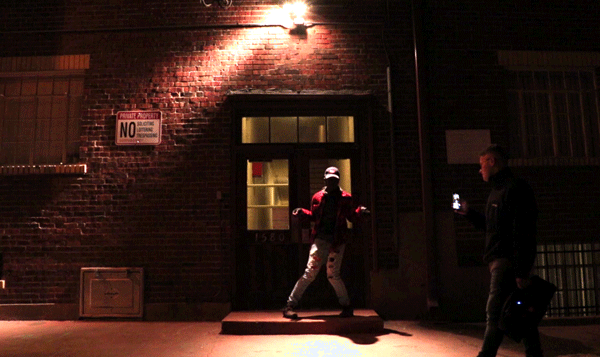
Let’s start with nightlife.
One of the first things people think of when they think of a 24-hour city is the nightlife, and that means keeping bars open until what for some people constitutes morning.
In 2017, Sen. Vicki Marble, Rep. Dan Thurlow and the since-expelled Rep. Steve Lebsock sponsored a bipartisan bill that would allow “a local government to extend the hours during which alcohol beverages may be sold for on-premises consumption at establishments within the local governments jurisdiction.” The current law prohibits it from 2 a.m. to 7 a.m.
“The issue for me is giving local cities and counties and districts the ability to control their own alcohol policies rather than having control by the state,” Thurlow told the Denver Post at the time.
As the Colorado Bar Owners Association put it, the bill was about competition — bars outside entertainment districts being allowed to compete with bars inside them, and Denver competing with places like New York and Las Vegas for tourism.
Their concern, Membership and Marketing Director Krystal Thompson told me, is in the idea that individual local governments would set the rules. It’s not fair if a bar on one side of the street in Arapahoe County can stay open until 4 a.m. but the bar on the other side of the street in Jefferson County has to close an hour earlier. The association would like closing time to be up to each owner.
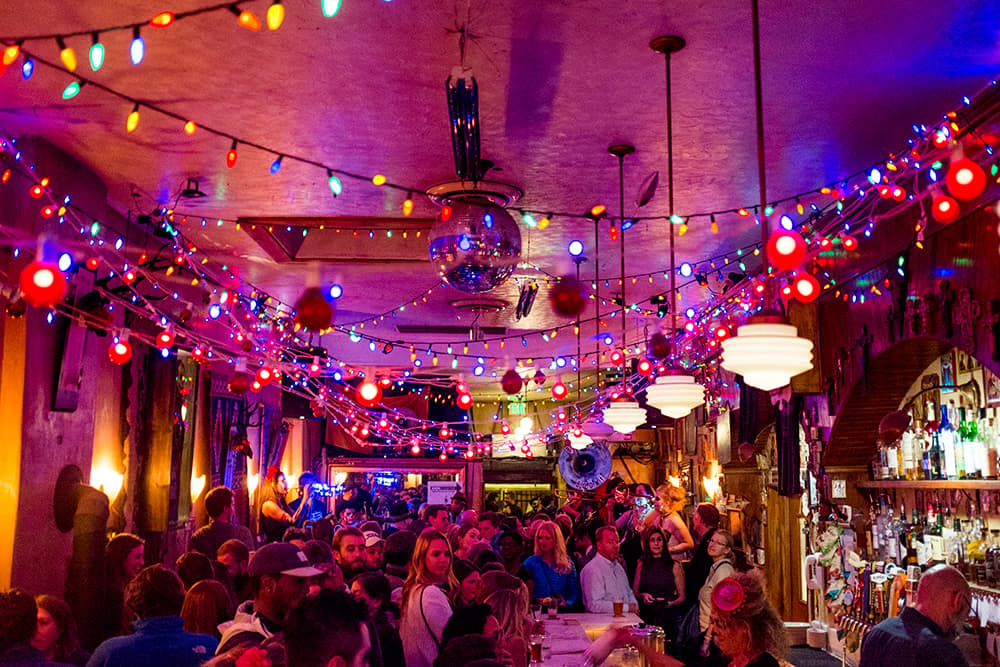
A local-government approach isn’t unheard of. In New York, state law allows for the on-premise sale of alcohol for consumption anytime but 4 to 8 a.m. Monday through Saturday and 4 to 10 a.m. Sunday. Each county, though, decides on its own closing time. The counties that make up New York City stick with those hours, as do neighboring Westchester and Nassau counties. Others, like Putnam County an hour or so north of the city, set bar close at 3 a.m. Less populous counties upstate tend to set closing time around 2 or 3 a.m.
Thurlow believed the likely result of this sort of rule would be staggered bar-close times and that it would alleviate the strain on law enforcement. But Mothers Against Drunk Driving objected, saying staggered close times would lead to people trying to drive from, say, Arvada to Denver when bars closed in Arvada to get a couple more drinks in in Denver.
The bill passed a Democrat-controlled House but was killed in the Republican-led Senate because of those safety concerns. The Post reported that its sponsors were considering reintroducing the legislation in 2018. That hasn’t happened.
The simple way to address those drunk driving concerns is to extend alcohol-sale hours uniformly across the state — though that still doesn’t mean every single bar would stay open until 4 a.m.
Mickey Petrollini, executive director of the Colorado Bar Owners Association, told the Post his organization would prefer a statewide extension of hours.
Sen. Marble’s office stopped responding to requests for comment on last year’s bill and whether she would re-work it and try again. Thompson said no new bill is in the works as far as she knows.
Denver Police Department spokesman Jay Casillas said the department does not have a stance on whether later bar-close times would ease some of the 2 a.m. chaos, and directed me to the Colorado Association of Chiefs of Police for further questions. The association initially replied to an interview request, but never made someone available. So, there are still a few questions here: What it would mean for police if Denver’s nightlife went later? Would it cost a lot more? Would they need more officers? Would they expect changes in crime rates or patterns?

Drunk people want late-night food, and early risers want early service.
Right now, diners are the best option for odd-hours dining. For early risers, 24-hour diners are an easier and cheaper option compared with breakfast spots like Snooze, Jelly and Syrup. The problem is that there aren’t many true diners. By my count, the list stands at five — Breakfast King, Denver Diner, Pete’s Kitchen, Sam’s No. 3 and Tom’s Diner — and no one seems to be opening new 24-hour diners. The latest addition was Tom’s Urban, but they’re no longer open 24-hours.
It’s hard to track, with restaurants opening and closing at a steady clip, how many more chefs and restaurateurs are offering late-night menus. If you’ve been watching lately, you’ve probably suspected an uptick. We’re more of a street-food city after hours.
“I think that there’s a pretty good offering in Denver,” said Kevin Delk, owner of Two-Fisted Mario’s, Beatrice & Woodsley and Bang Up to the Elephant. “I don’t think that people are looking for a fine dining experience in late night. I think we’ve got plenty of street food available.… I think when it started getting into food you can eat with a knife and fork, it gets a little more scarce.”
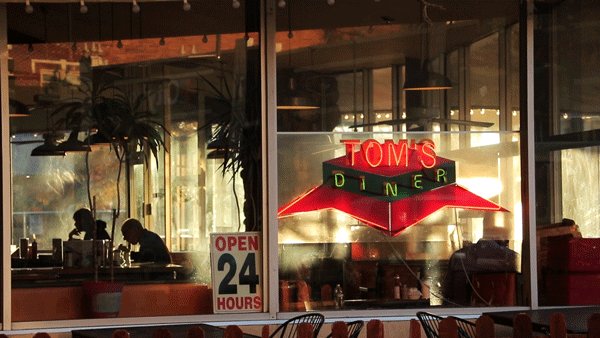
Not an unexpected perspective, considering one of his restaurants serves pizza and another serves a kale salad with fried sweet plantains, queso fresco, pickled red onion, jicama and hot pepper vinaigrette during an 11 p.m. to 1 a.m. happy hour. The latter, an offering at Bang Up, isn’t something you’d call fancy, but it’s certainly — to use a restaurant buzzword — elevated. Same goes for the rest of the menu.
Izakaya Ronin just got in the game, too. In its downstairs boiler-room-turned-speakeasy, they’re serving sushi, ramen and rice bowls until 1 a.m. And couple places are upping the ante. It’s not what you’d call foodie fare, but the Cherry Cricket and Famous Original J’s just announced that they’ll be serving food until 3 a.m. That means iconic Denver burgers in LoDo and scientifically engineered New York-style pizza in Five Points easily available for an hour after bar close.
“It’s downtown and we’re right here at the bar let-out of LoDo, and our neighbors here are Ian’s Pizza and they are open that late, and we came down and did a little research and found our cheeseburgers and Cricket burgers and milkshakes are perfect fit,” Amanda Young, director of operations for the Breckenridge-Wynkoop Group said.
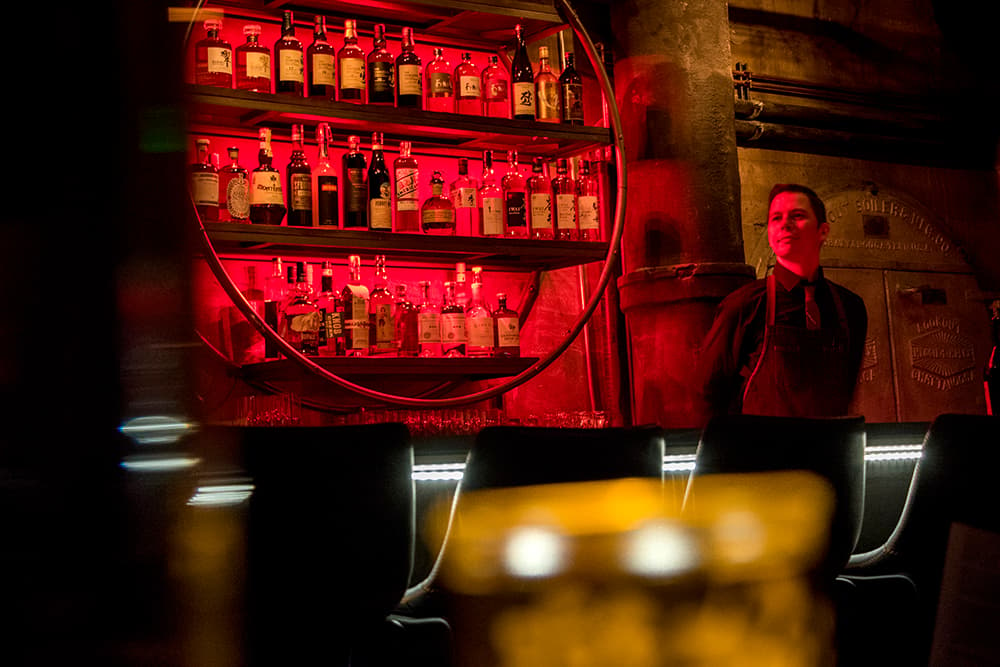
Staying open late comes with its challenges, of course.
“I remember when we first opened up the pizzeria, we would literally sit out front and for two months, if someone would walk in, we’d flip a coin to see who would get to go make the pizza,” Delk said.
“From just the brass-tacks business side of things, you have to be prepared to kind suffer though it for the first year to get that name recognition. To do that, you have to stay open. If it’s snowing out, whoever’s in charge, they have to make the call, even if it’s really nasty outside, you have to keep the doors unlocked. Even if it’s just one person who comes, and they pull on the door and they can’t get in, they might hold that against you and they’re not going to come back.”
There’s also the matter of the drunks — serving people who are rambunctious, surly, something in between or unpredictably swinging from one end of the spectrum to the other. Cherry Cricket Ballpark, Young said, has trained its staff to deal with these things.
Delk says you have to “have a sense of humor about it.”
“There’s no logic to someone who is three sheets to the wind,” Delk said. “What we learned is that you have to be entertainers first and foremost — as long as you get food out on time. That’s what made [Two-Fisted Mario’s] really successful, I think, is knowing how to create that energy and they forget about the fact that they’re waiting.”
That’s trickier when you’re talking about something with a little more swank than a pizza joint, but doable.
“The benefit of getting through that is — I think it’s one of the few spaces in the city that’s pretty untouched,” Delk said. “Whoever’s doing it is going to get the notoriety.”
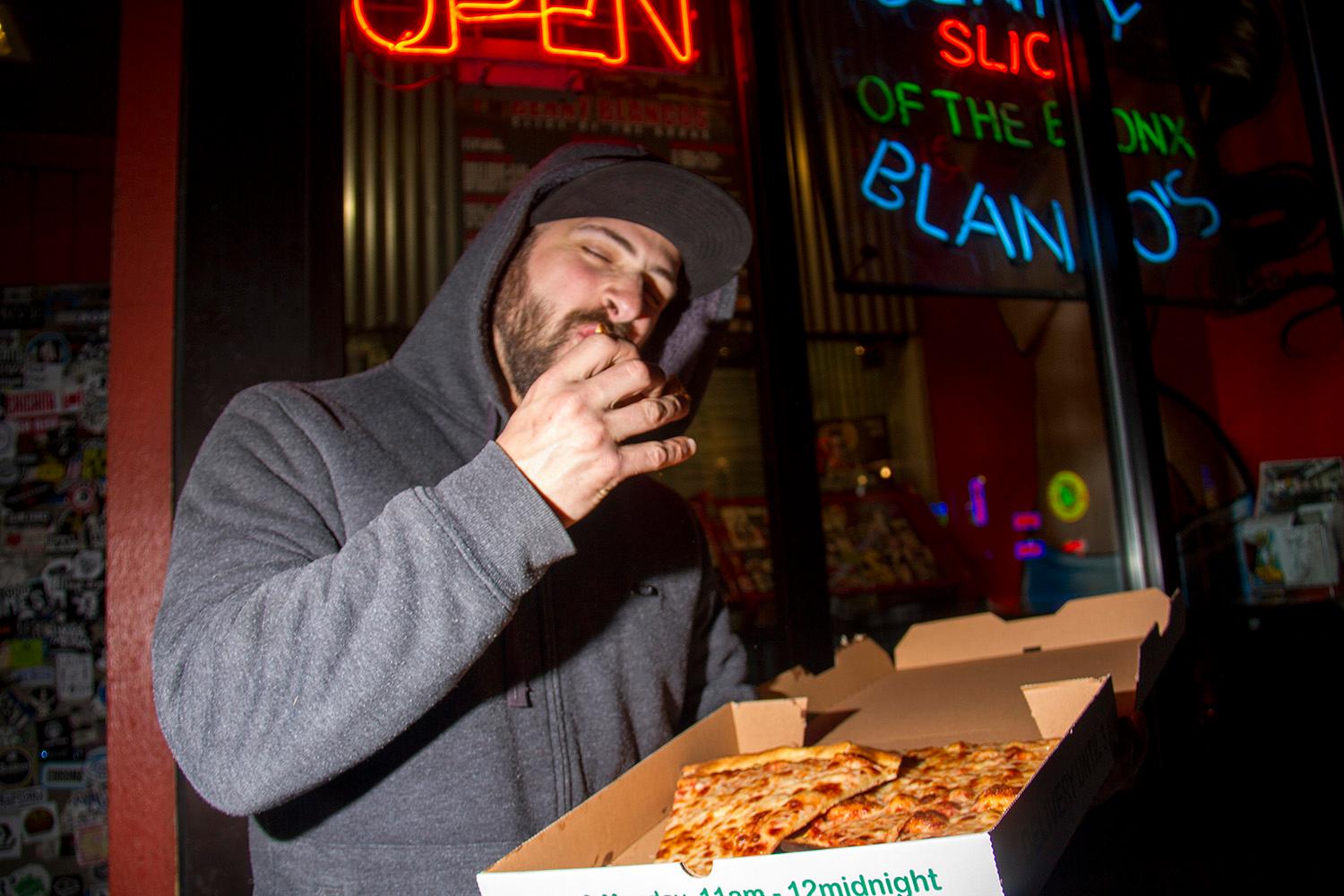
To support all-hours amenities, we would need all-hours transit.
The reason we don’t have 24-hour public transportation is the same reason we likely won’t have it anytime soon: The demand isn’t there — at least not in a way that motivates RTD to make changes. For now, we’re relying heavily on ride-sharing to fill in the gaps.
“We have the route on Colfax that’s probably the only one that runs nearly all night,” said Jeff Becker, senior manager of service development at RTD. “Other than that, we don’t have the demand that we could justify it. We’d be running empty buses.”
He’s referring to the 15, of course, which according to the online schedule actually does run through the night. The 0 on South Broadway runs almost through the night — the first bus departs the Broadway and I-25 station at 4:05 a.m. and the last departs at 2:39 a.m. on weekdays.
RTD decides how early or late to run buses and trains based on need and on a route-by-route basis. It makes needed schedule changes three times a year based on feedback from riders, drivers, board members and elected officials, Becker said.
As the city has grown and changed, so have travel patterns, but not enough that there have been enormous changes in what they call service span. And even as Denver continues to grow, he said, “there’s nothing drastic on the horizon.”
Because of the service gaps and the infrequency with which other buses run in the middle of the night, a lot of people who need transportation in those hours turn to ride-share apps. That includes drunk people on one end, overnight and early morning workers on the other.
Lyft has given more than 2,000 rides per weekend night between 2 and 5 a.m. so far this year, the company told me. And according to responses gathered from Lyft users, 70 percent of Denver Lyft users go out more or stay out longer because they have Lyft and 29 percent use the app to get around when public transit does not operate. (Uber initially responded to a request for comment or data, but did not follow up with either.)
Lyft Denver General Manager Gabe Cohen said there aren’t more riders in that 2 to 5 a.m. window than other times, but he was surprised by how many there were and called it “a meaningful number.”
“I do wonder what those people were doing before,” he added.
In my own experience, the things people did pre-ride-share include standing in the cold on an empty street while waiting an hour for the cab they called to show up or, on another freezing night, begging a driver to break the rules and pick them up at an intersection instead of an address because they just moved here and don’t know where they are, and their friend is too drunk to walk.
So, things are looking up.
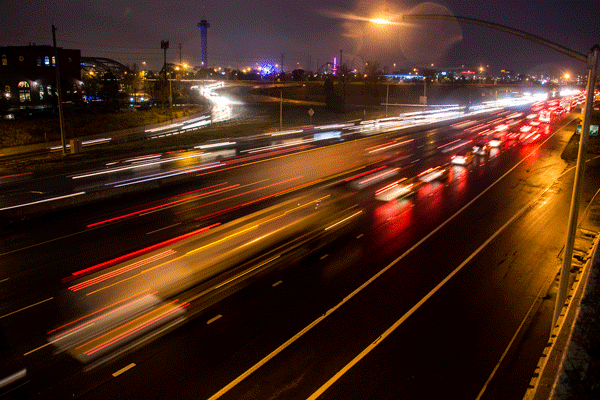
Twenty-five percent of Denver Lyft passengers said owning a personal vehicle is less important now, Cohen said, and 54 percent said they use their personal car less. He cited his neighbor who just gave up his car and is using RTD, ride-share and one-day rentals to get around as the current model.
There’s still a lot of car involved in that plan, but there’s a trend there. More and more, Denverites want to ditch their cars.
New York is an obvious extreme, but what about benchmarks along the way?
Bars in Austin and Seattle are open until 2 a.m. and public transit in both cities starts running around 5 a.m. In Austin, it stops around midnight, give or take half an hour. In Seattle, the later end of service is 2:30 a.m. Those cities are similar to Denver in size and ripeness for change. In the very old city of Boston, things operate on those schedules — evidence that sometimes things just don’t change.
We might be moving closer to operating like Chicago where a handful of bars stay open until 4 a.m. and some public transportation runs all night.
So... does Denver want this?
That depends on who you ask, but everyone I happened to ask was, on an enthusiasm scale, somewhere between cautiously optimistic and all for it. Living in a 24-hour city means more fun and more convenience, and that’s a pretty widely appealing prospect.
“If you’ve got a 24-hour city, that means that the amenities, quality-of-life features are catering to the public all the time,” said Randy Thelen, the Downtown Denver Partnership’s vice president of economic development. “Individuals working a night shift get out at 4 a.m. and … they can do something if they want to. It provides more access to more quality-of-life features more often.”
And we’re more and more seeing big plans for Denver that would provide just that — most notably the visions for entire new neighborhoods in place of Elitch Gardens, its parking lots and the Mile High Stadium parking lots. Some developers, like Kyle Zeppelin, are thinking about it on a somewhat smaller scale.
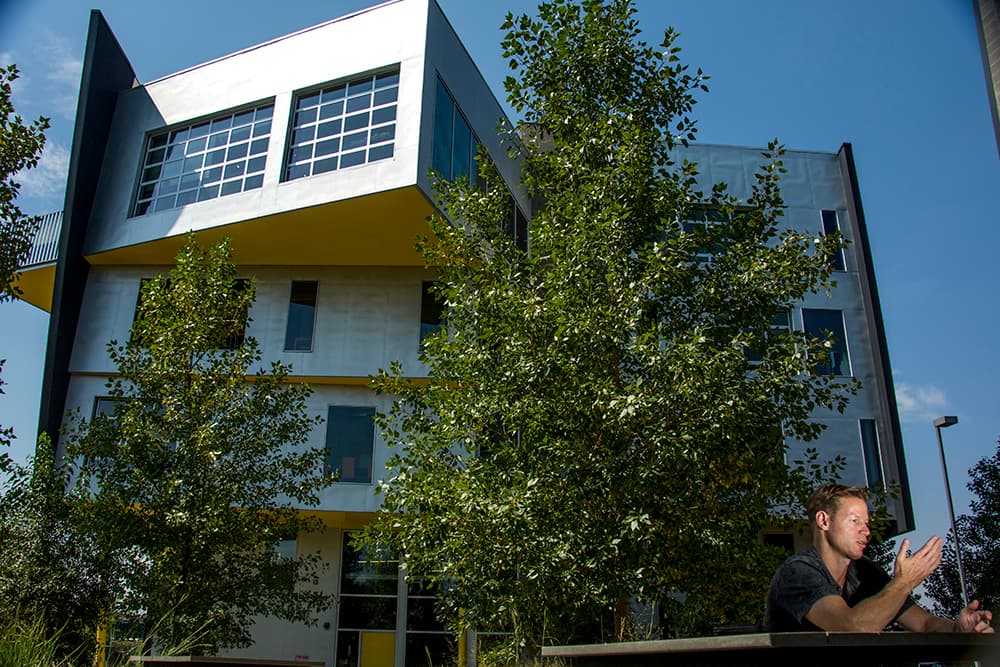
“Zeppelin Station is more geared towards that. They’re open past midnight for most of the food outlets on weekends and past 10 o’clock during the week, just with the idea that people are functioning at different times and it’s more geared toward a younger, working-class demographic that doesn’t have a lot of time or money to commit to drawn-out meals,” he said. “It’s kind of more representative of a new economy, a new working class.”
Zeppelin Station is also pointedly transit-oriented — something we’re seeing developers and renters value more as the city grows.
Andrew Orvedahl, one of the Denver comedians behind The Grawlix and “Those Who Can’t,” raised that issue of access to public transportation before all others when asked what he liked about life in New York and L.A. that Denver would benefit from.
“I found that public transit to be better in both cities -- even in L.A., a city which people don’t equate with public transit, has a subway system. They have a bus line that runs on basically every road and they’re very affordable. On Denver public transit, you’re often waiting 30 minutes and the cost is prohibitive,” he said. “More than anything, it’s having better public transit infrastructure and just improving the amount of times people can use it.”
St. John had a similar concern: “We don’t really have the public transportation infrastructure to support the 24-hour thing yet. If a bunch of restaurants started to be open for 24 hours, if there were new laws introduced that would allow bars to be open ‘til 4 in the morning, I don’t know if it would work.”
As for the other pieces, it’s in part a matter of lifestyle and taste. If you’re the type of person who’s out at bars until 2 a.m., you’re probably on board with getting a couple extra hours, even if you’re not always going to use them. If you’re not, the potential reduction of 2 a.m. chaos might still appeal to you.
“When bars are open until 4 or 5 in the morning, people naturally leave between 2 and 4,” St. John said.
“I’ve been in LoDo so many times, doing comedy down there, and it’s insane,” Orvedahl said. “The number of drunk people that are surely driving is out of control. I think anything that doesn’t just dump all those drunk people out at once — you’d see fewer fights.
“I know from experience that LoDo on the weekends is just the worst. It just is cultivating terrible things happening. I’ve never been in LoDo late at night on the weekend and been like, ‘This is cool and I’m glad this is going on in Denver.’”
What’s going on in Denver right now — rapid growth and change — is probably the main concern for some, though no one I’ve spoken to mentioned it. A 24-hour city means a very different city than the Denver of 10, even 5 years ago.
“I think it certainly speaks to the changing and growing Denver,” Thelen said. “You’ve got this consistent influx of talent, new people. You’ve got a shifting economy where we’re becoming more technology-centric, and those jobs have odd hours.”
The way Zeppelin sees it, mixed-use development is key, but he still sees a lot of single-use projects being built.
“Mixed use is what gives you that 24-hour functionality where you have people and living and working throughout the day, and you have retail and density,” he said. “I think that’s a huge draw. People want to live and work urban and not have these huge disconnects where you can’t grab a bite to eat after 9 o’clock at night. It seems like Denver’s grown beyond that.”
As more people move here, he added, Denver needs to become “more representative of not just how one group of people live but how different groups of people live.”
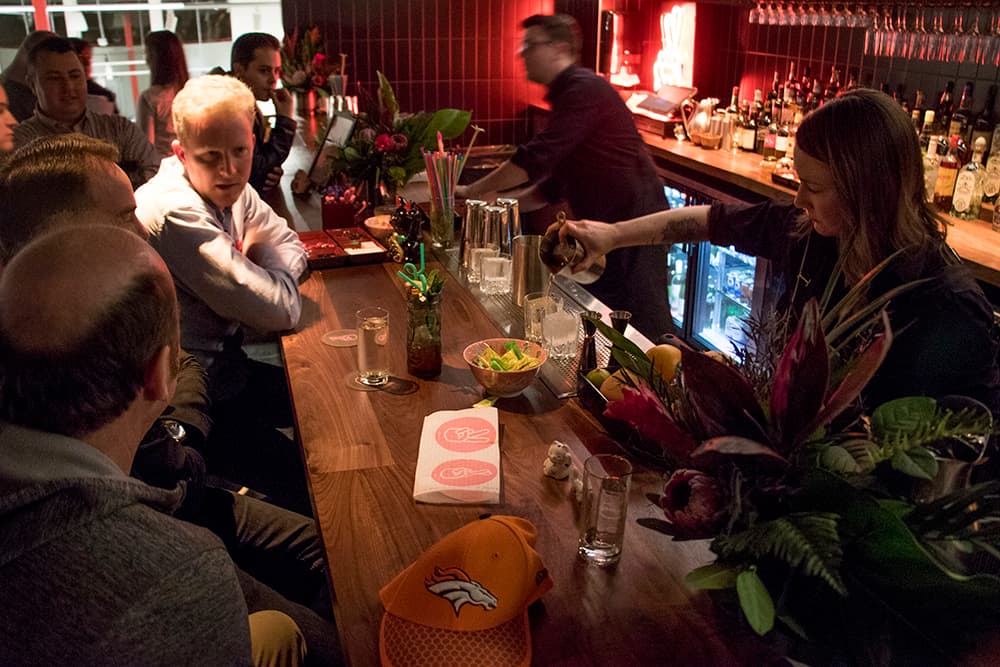
More people tends to mean (and already has meant) housing challenges and displacement, and, as Thelen pointed out, being a 24-hour city also means more tourism. There are economic upsides to more people living in and visiting Denver, but the city will need to spend more money on infrastructure. In addition to better public transit, that includes things like street lighting, parking and public safety.
And right now, there’s little sign of the flood of new people stopping.
“We have to recognize that there are all kinds of people in the world — some are night owls, some are early risers. People want to live their lives at different hours,” Thelen said. “... You look at the handful of cities across the country and across the world [that are 24-hours] — I don’t think there’s any substantial downside.”
So whether or not we’re willing to take this ride — with ups of an all-access lifestyle and the downs of gentrification — and become a 24-hour city comes down to whether we’re ready for a culture shift. And we’d better think seriously about it now, because they’re starting to board the roller coaster.
A few weeks ago, I was running late getting to the office and decided to forgo my bike and the bus for a Lyft. It was around 9 a.m. and my driver told me I was her last ride “of the night.”

I was surprised, and she told me she exclusively works overnight shifts when she drives.
It’s a weekday, so for the most part her rides aren’t late-night revelers. They’re late-night workers, they’re people who need to be to work at 6 a.m. and, yeah, probably at least one person who was at a bar until 1 a.m. They’re among the growing many who choose or need to live their lives outside of Denver’s normal operating hours — who are already almost living in a 24-hour city.
